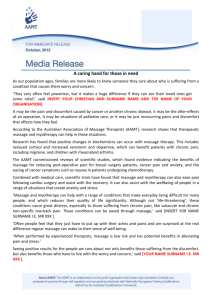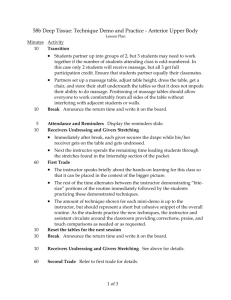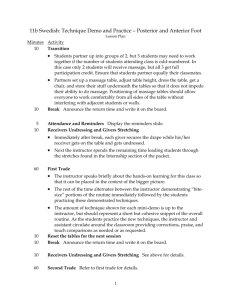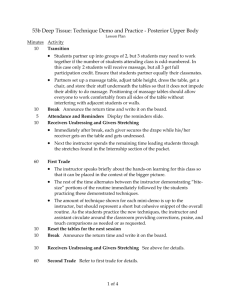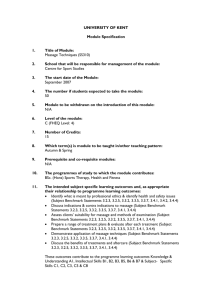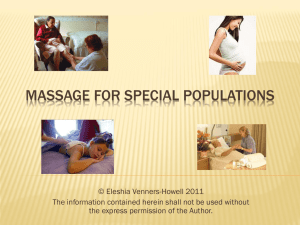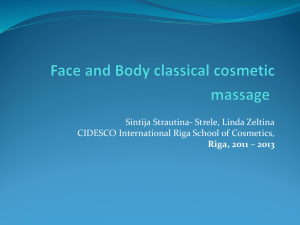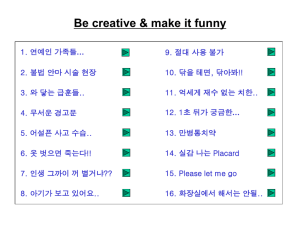Massage Therapy for Pain and Injuries
advertisement
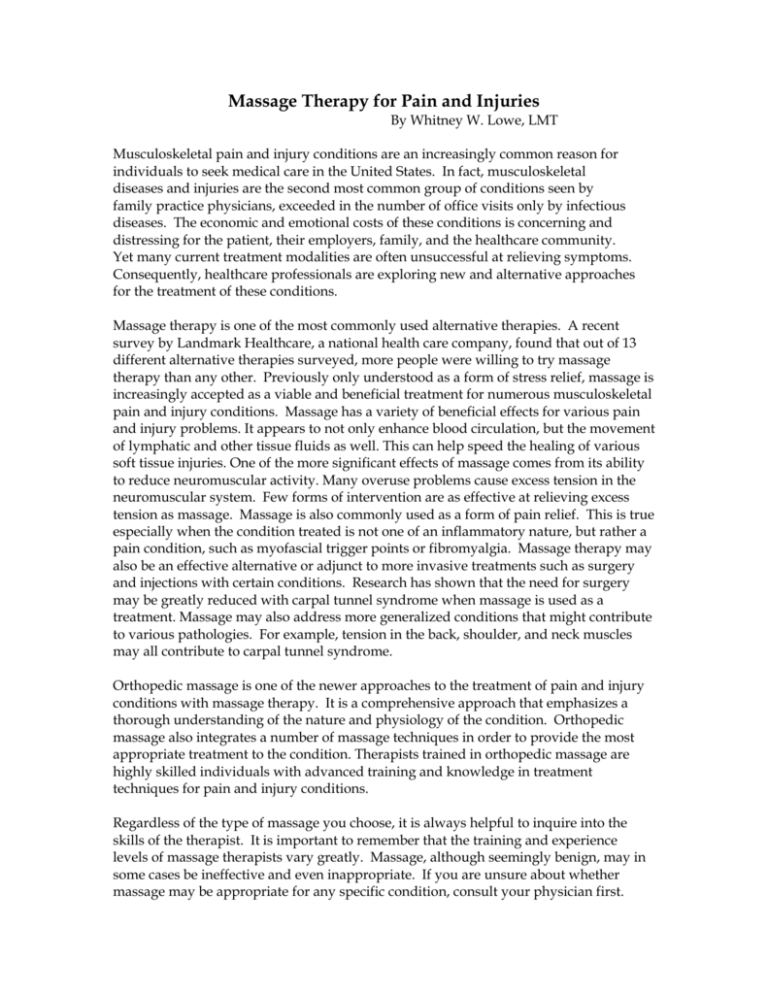
Massage Therapy for Pain and Injuries By Whitney W. Lowe, LMT Musculoskeletal pain and injury conditions are an increasingly common reason for individuals to seek medical care in the United States. In fact, musculoskeletal diseases and injuries are the second most common group of conditions seen by family practice physicians, exceeded in the number of office visits only by infectious diseases. The economic and emotional costs of these conditions is concerning and distressing for the patient, their employers, family, and the healthcare community. Yet many current treatment modalities are often unsuccessful at relieving symptoms. Consequently, healthcare professionals are exploring new and alternative approaches for the treatment of these conditions. Massage therapy is one of the most commonly used alternative therapies. A recent survey by Landmark Healthcare, a national health care company, found that out of 13 different alternative therapies surveyed, more people were willing to try massage therapy than any other. Previously only understood as a form of stress relief, massage is increasingly accepted as a viable and beneficial treatment for numerous musculoskeletal pain and injury conditions. Massage has a variety of beneficial effects for various pain and injury problems. It appears to not only enhance blood circulation, but the movement of lymphatic and other tissue fluids as well. This can help speed the healing of various soft tissue injuries. One of the more significant effects of massage comes from its ability to reduce neuromuscular activity. Many overuse problems cause excess tension in the neuromuscular system. Few forms of intervention are as effective at relieving excess tension as massage. Massage is also commonly used as a form of pain relief. This is true especially when the condition treated is not one of an inflammatory nature, but rather a pain condition, such as myofascial trigger points or fibromyalgia. Massage therapy may also be an effective alternative or adjunct to more invasive treatments such as surgery and injections with certain conditions. Research has shown that the need for surgery may be greatly reduced with carpal tunnel syndrome when massage is used as a treatment. Massage may also address more generalized conditions that might contribute to various pathologies. For example, tension in the back, shoulder, and neck muscles may all contribute to carpal tunnel syndrome. Orthopedic massage is one of the newer approaches to the treatment of pain and injury conditions with massage therapy. It is a comprehensive approach that emphasizes a thorough understanding of the nature and physiology of the condition. Orthopedic massage also integrates a number of massage techniques in order to provide the most appropriate treatment to the condition. Therapists trained in orthopedic massage are highly skilled individuals with advanced training and knowledge in treatment techniques for pain and injury conditions. Regardless of the type of massage you choose, it is always helpful to inquire into the skills of the therapist. It is important to remember that the training and experience levels of massage therapists vary greatly. Massage, although seemingly benign, may in some cases be ineffective and even inappropriate. If you are unsure about whether massage may be appropriate for any specific condition, consult your physician first.

